
How to Use MQ-5 SENSOR NATURAL GAS: Examples, Pinouts, and Specs
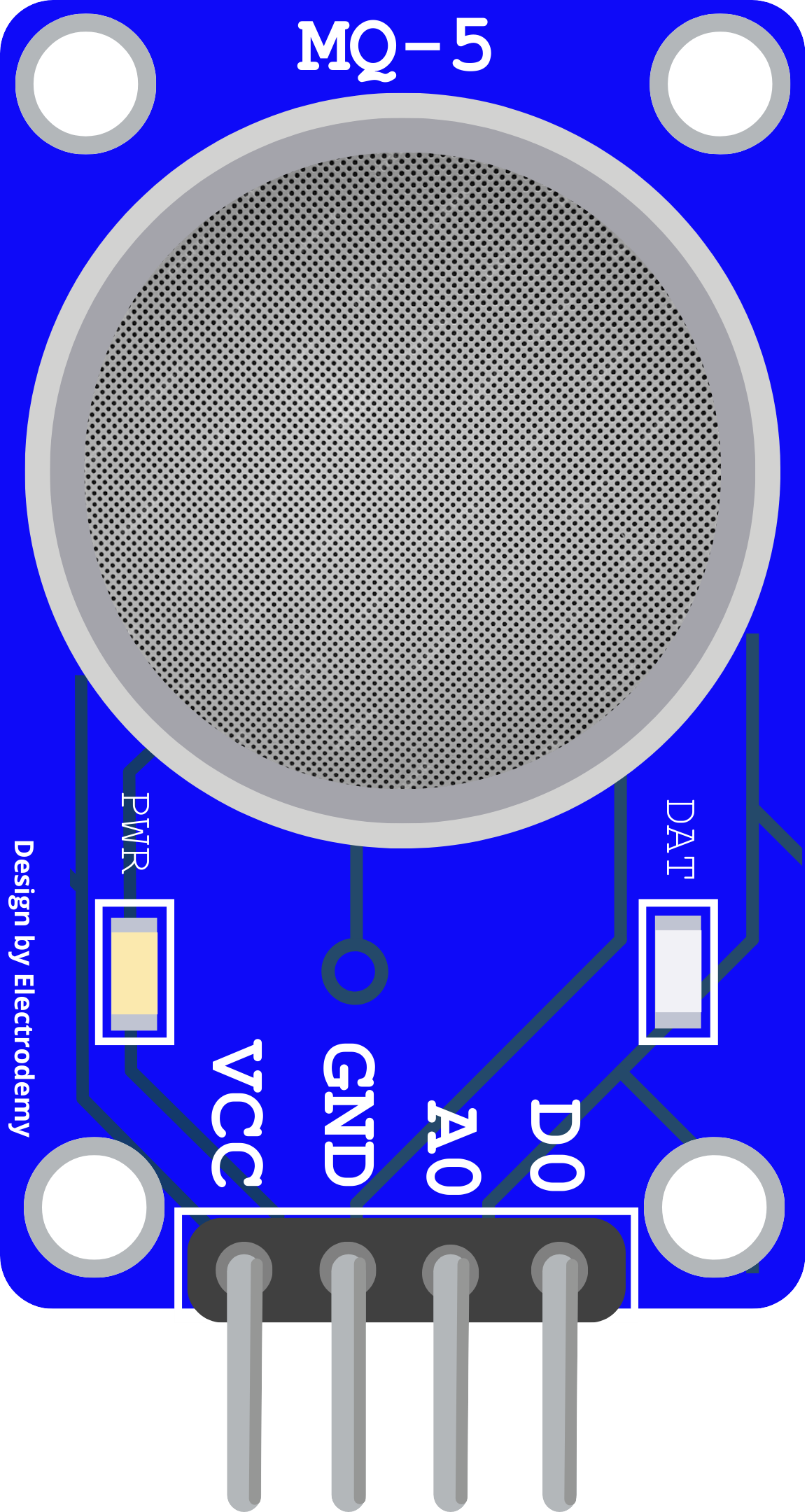
 Design with MQ-5 SENSOR NATURAL GAS in Cirkit Designer
Design with MQ-5 SENSOR NATURAL GAS in Cirkit DesignerIntroduction
The MQ-4 is a widely used gas sensor module capable of detecting natural gas (methane) concentrations in the air. It is designed for easy interfacing with microcontrollers and is commonly used in applications such as gas leak detection systems in homes, industries, and vehicles.
Explore Projects Built with MQ-5 SENSOR NATURAL GAS
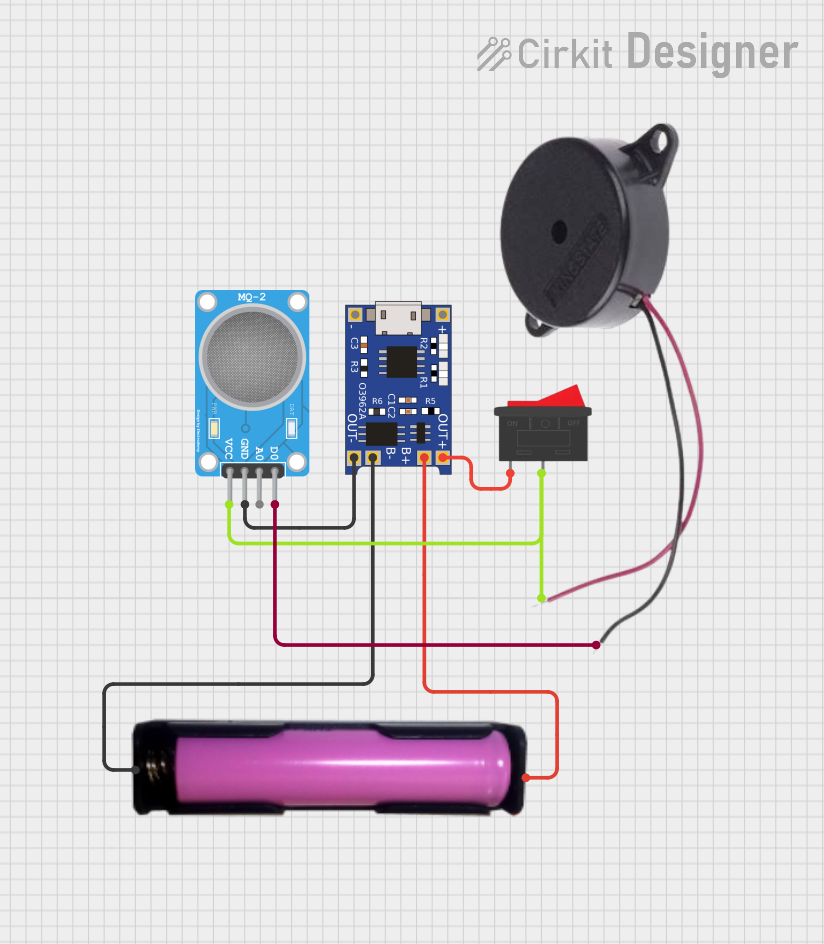
 Open Project in Cirkit Designer
Open Project in Cirkit Designer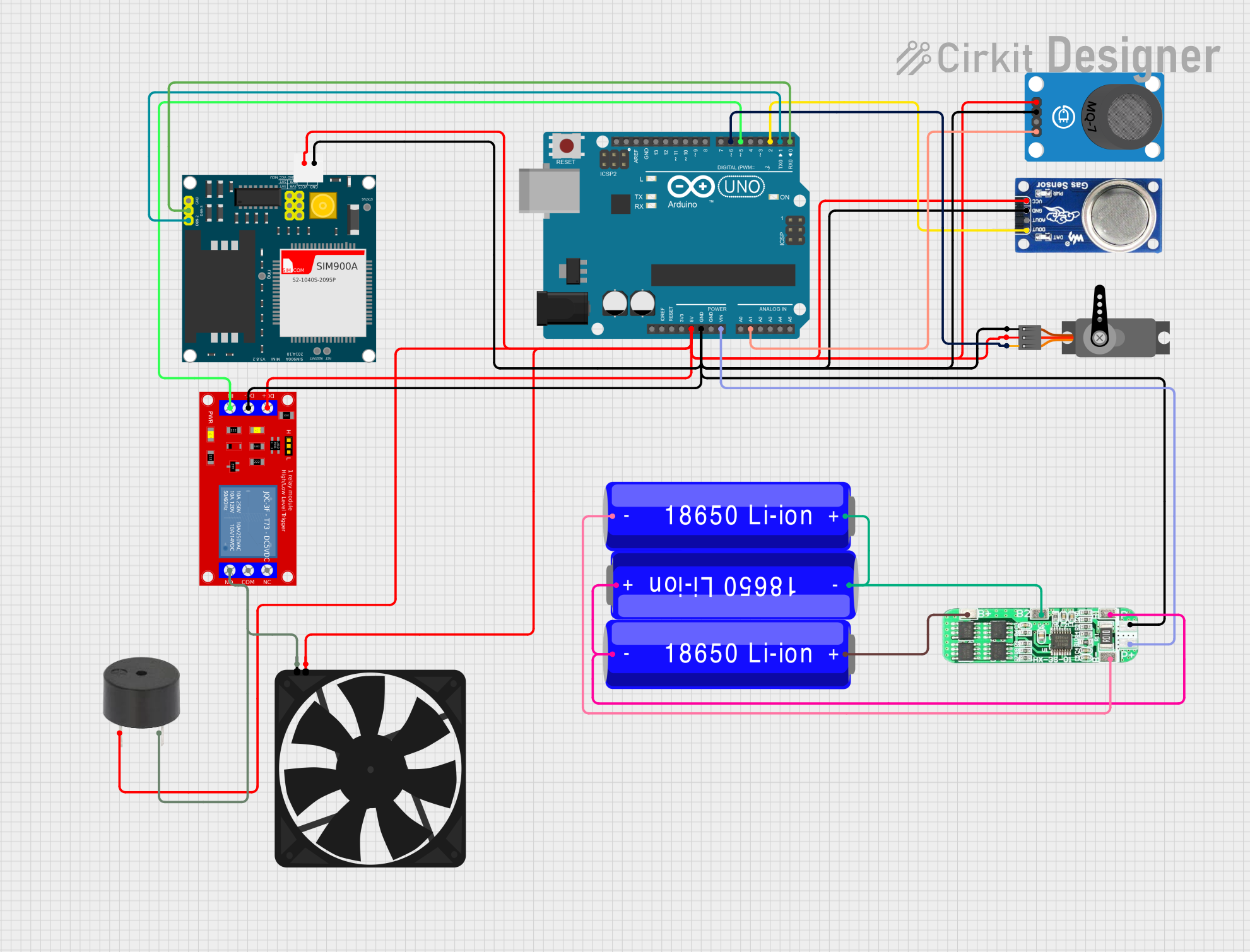
 Open Project in Cirkit Designer
Open Project in Cirkit Designer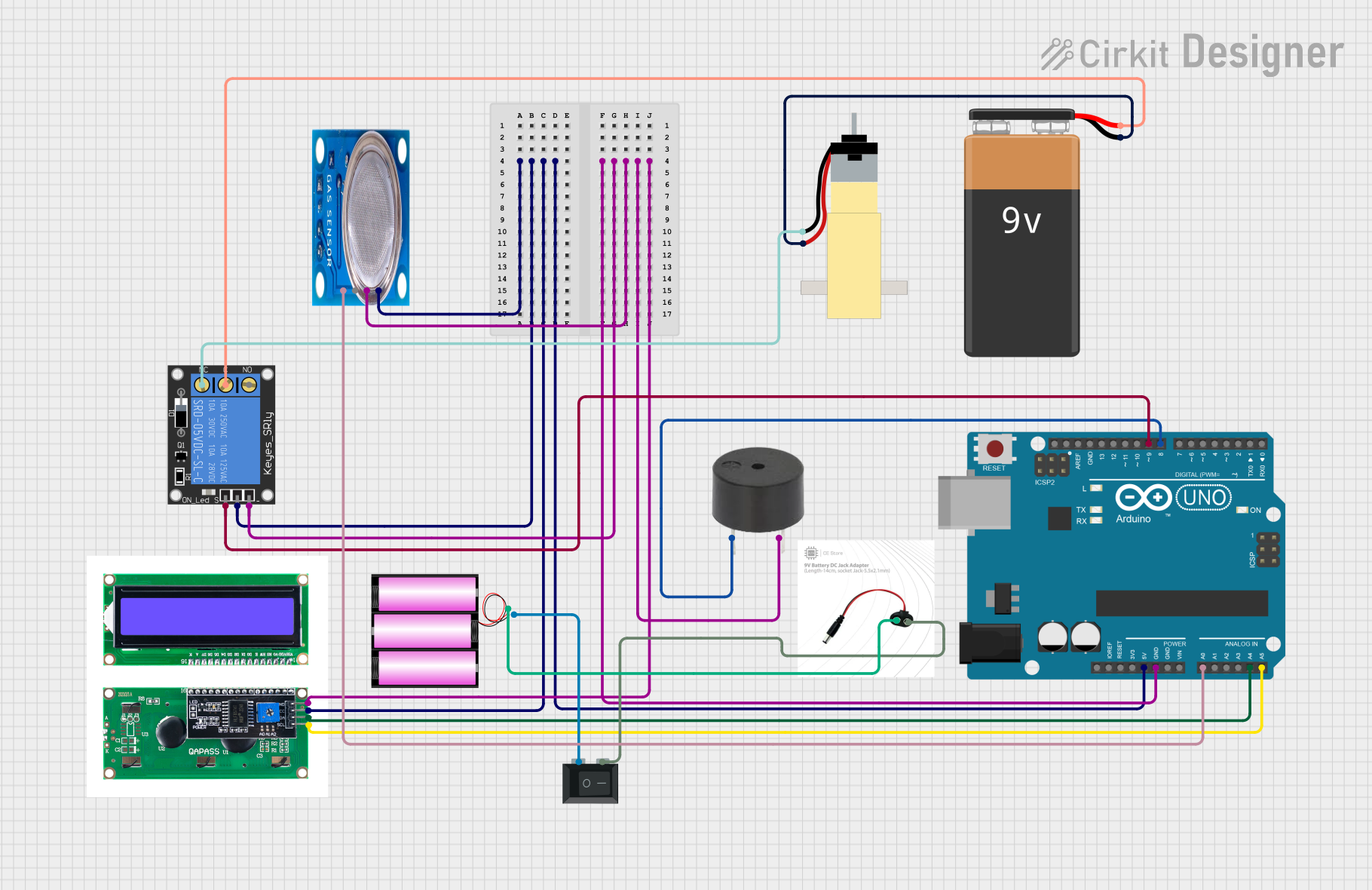
 Open Project in Cirkit Designer
Open Project in Cirkit Designer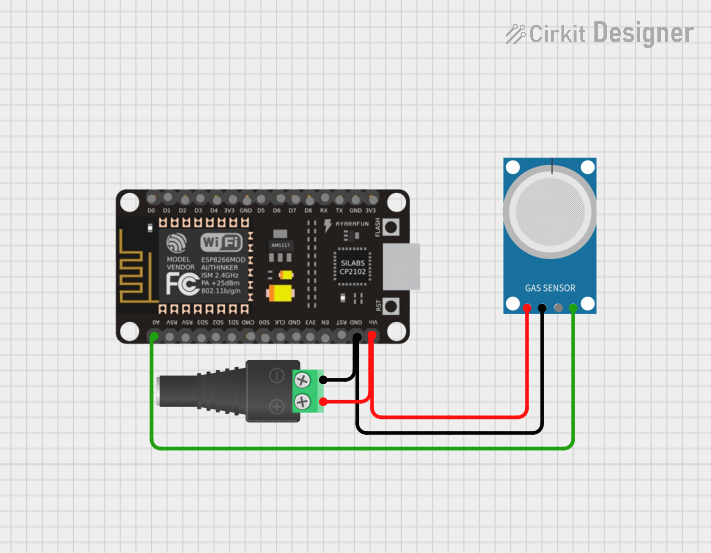
 Open Project in Cirkit Designer
Open Project in Cirkit DesignerExplore Projects Built with MQ-5 SENSOR NATURAL GAS

 Open Project in Cirkit Designer
Open Project in Cirkit Designer
 Open Project in Cirkit Designer
Open Project in Cirkit Designer
 Open Project in Cirkit Designer
Open Project in Cirkit Designer
 Open Project in Cirkit Designer
Open Project in Cirkit DesignerCommon Applications and Use Cases
- Domestic and industrial gas leak detectors
- Portable gas detectors
- Gas level monitoring in gas storage areas
- Air quality monitoring
Technical Specifications
Key Technical Details
- Target Gas: Methane, CNG Natural gas
- Detection Range: 200 to 10000 ppm methane
- Preheat Duration: 20 seconds
- High Sensitivity and Selectivity to Natural Gas
- Supply Voltage: 5V ±0.1
- Heating Voltage: 5V ±0.1
- Load Resistance: Adjustable
- Heater Resistance: 33Ω ±5%
- Heater Power Consumption: Approx. 800mW
Pin Configuration and Descriptions
| Pin Number | Pin Name | Description |
|---|---|---|
| 1 | VCC | Power supply (5V) |
| 2 | GND | Ground |
| 3 | DO | Digital output (TTL logic level) |
| 4 | AO | Analog output (Variable voltage) |
Usage Instructions
How to Use the Component in a Circuit
- Powering the Sensor: Connect the VCC pin to a 5V supply and the GND pin to the ground.
- Reading the Sensor:
- Analog Output (AO): Connect the AO pin to an analog input on your microcontroller to get a variable voltage that corresponds to the gas concentration.
- Digital Output (DO): The DO pin can be connected to a digital input on your microcontroller. It goes high when the gas level exceeds a certain threshold, which can be adjusted using the onboard potentiometer.
Important Considerations and Best Practices
- Preheating: Allow the sensor to preheat for at least 20 seconds to stabilize the readings.
- Calibration: Calibrate the sensor in the environment where it will be used for accurate detection.
- Ventilation: Ensure proper ventilation around the sensor to allow gas to reach the sensing element.
- Avoid Extreme Conditions: Protect the sensor from extreme temperatures, humidity, and exposure to volatile organic compounds to prevent damage or inaccurate readings.
Example Code for Arduino UNO
// MQ-4 Sensor Example Code
int analogPin = A0; // Analog input pin connected to AO
int digitalPin = 2; // Digital input pin connected to DO
int sensorValue = 0; // Variable to store the sensor value
void setup() {
pinMode(digitalPin, INPUT); // Set the digital pin as input
Serial.begin(9600); // Start serial communication at 9600 baud
}
void loop() {
sensorValue = analogRead(analogPin); // Read the analog value from sensor
Serial.print("Gas concentration: ");
Serial.println(sensorValue); // Print the sensor value to the serial monitor
// Check if the digital pin is HIGH (gas concentration above threshold)
if (digitalRead(digitalPin) == HIGH) {
// Gas level is above the threshold
Serial.println("Gas detected!");
} else {
// Gas level is below the threshold
Serial.println("No gas detected.");
}
delay(1000); // Wait for 1 second before reading again
}
Troubleshooting and FAQs
Common Issues Users Might Face
- Inconsistent Readings: Ensure the sensor has preheated for at least 20 seconds and is calibrated correctly.
- No Response to Gas: Check the power supply and wiring connections. Ensure the sensor is not damaged.
- False Alarms: Adjust the sensitivity using the onboard potentiometer and avoid placing the sensor near other volatile organic compounds.
Solutions and Tips for Troubleshooting
- Sensor Not Working: Verify that the sensor is receiving the correct voltage and that all connections are secure.
- Calibration Issues: Perform calibration in a controlled environment with a known concentration of natural gas.
- Environmental Factors: Be aware of environmental factors that could affect the sensor's performance, such as humidity and temperature.
FAQs
Q: How do I adjust the sensitivity of the sensor? A: Use the onboard potentiometer to adjust the threshold level for the digital output.
Q: Can the MQ-4 sensor detect other gases? A: While the MQ-4 is optimized for methane, it may respond to other gases. However, its selectivity and sensitivity are highest for natural gas.
Q: What is the lifespan of the MQ-4 sensor? A: The lifespan can vary based on usage and environmental conditions, but typically MQ sensors can last for several years with proper maintenance and calibration.